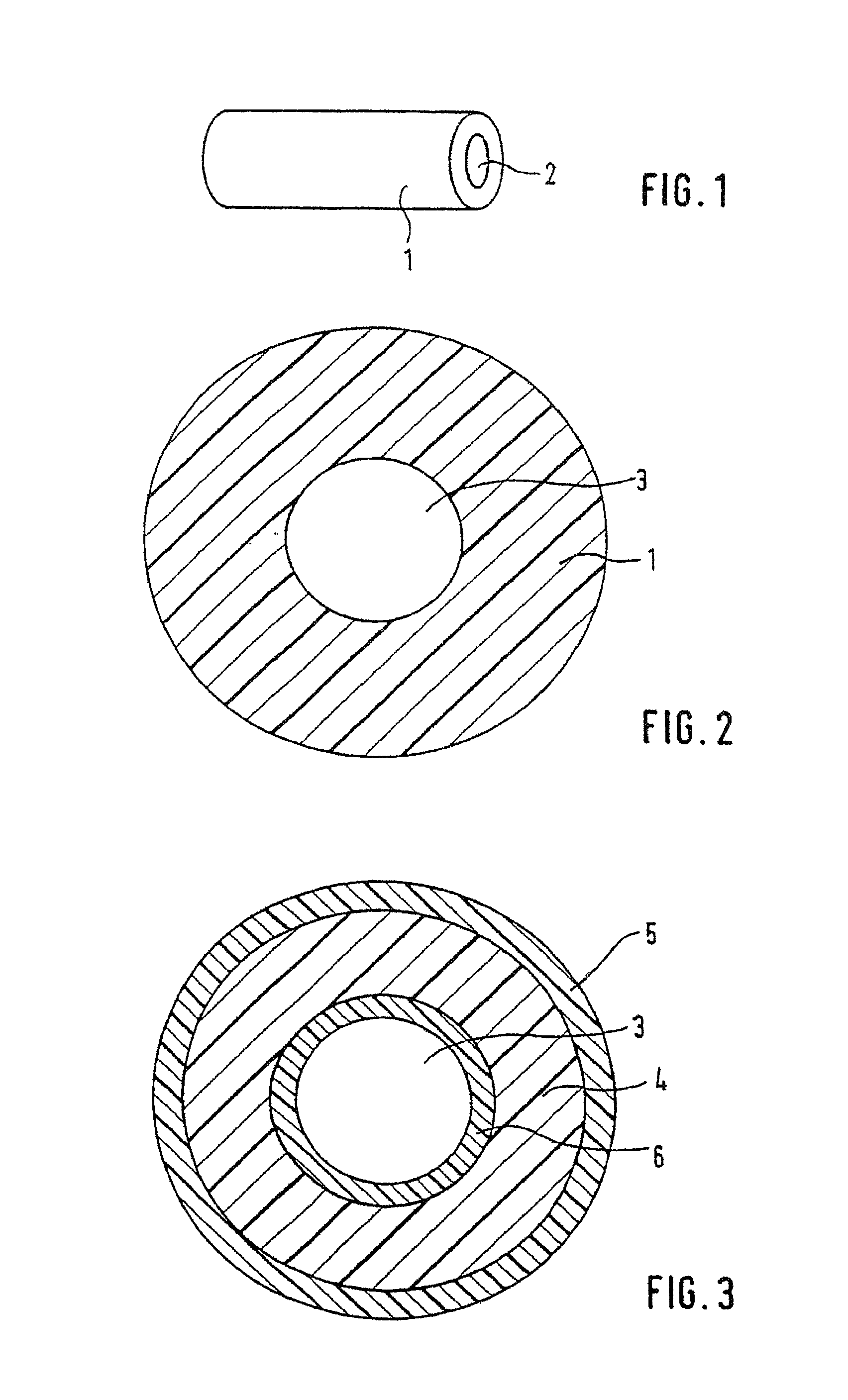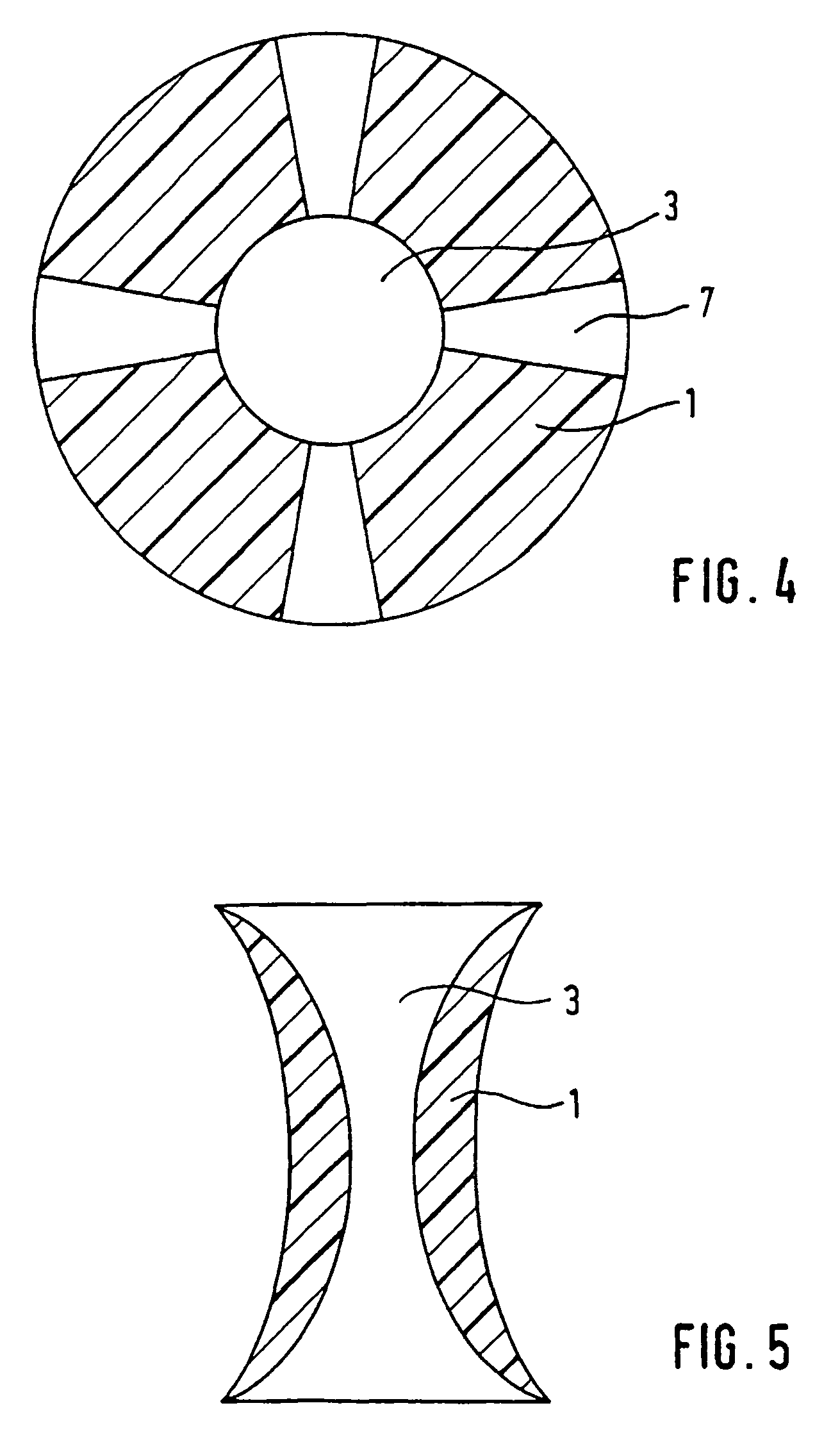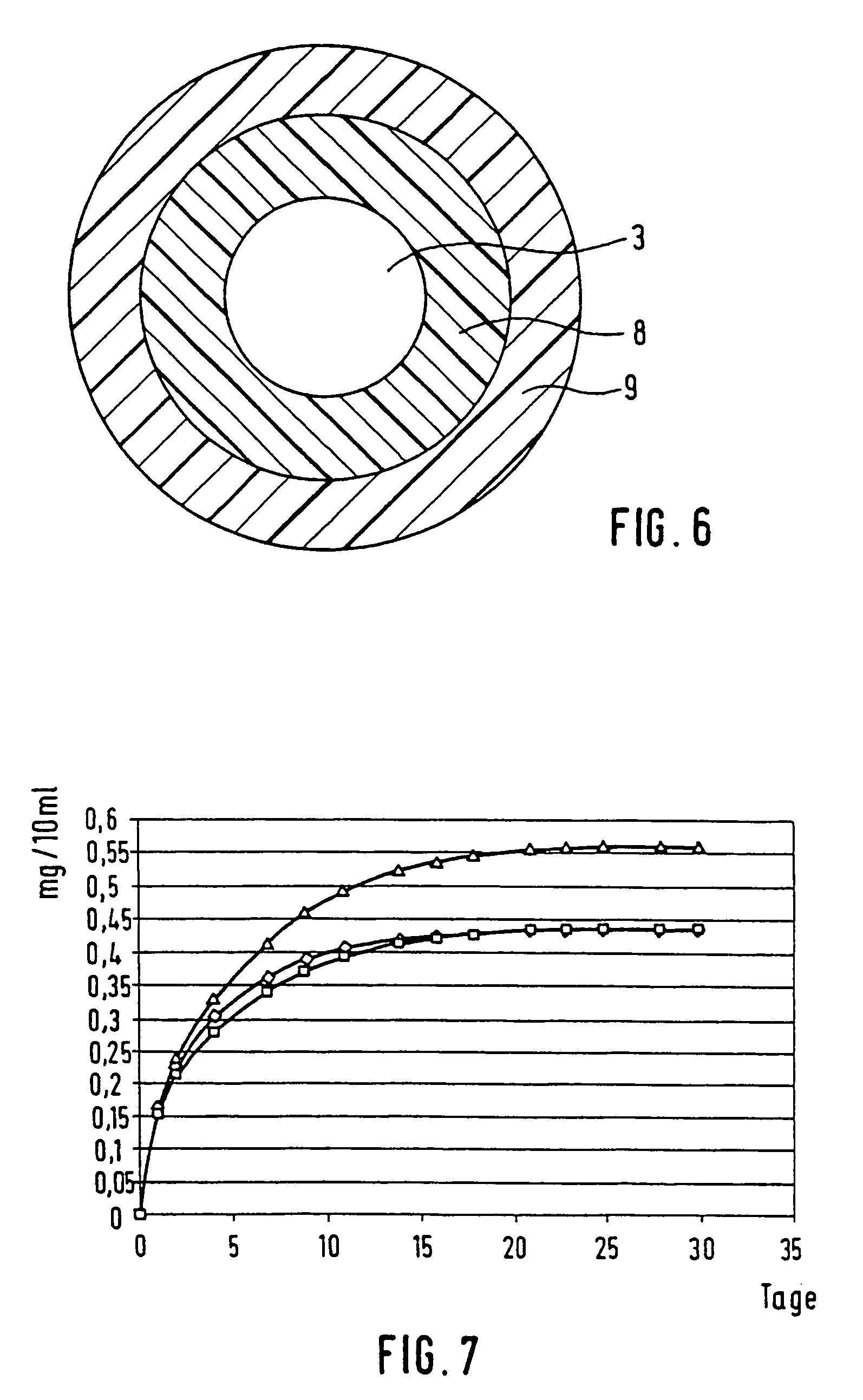Spacing device for releasing active substances in the paranasal sinus
a technology of active substances and fenestrations, which is applied in the direction of prosthesis, dilators, blood vessels, etc., can solve the problems of not reaching into, reducing scope, and unsuitable for nasal sinus application
- Summary
- Abstract
- Description
- Claims
- Application Information
AI Technical Summary
Benefits of technology
Problems solved by technology
Method used
Image
Examples
1st example
1st Example
Production of a Dexamethasone-Loaded Polymer Film
[0118]The film has the following composition:
[0119]
Evatane 40-55 (purified with acetone)17.955gDexamethasone DAB 10 / Ph. Eur.0.045gDichloromethane p.A.98mlAcetone p.A.4.5ml
[0120]The polymer used, a poly(ethylene-vinyl acetate) copolymer, is initially freed of additives which were added during the production of Evatane 40-55. Fifty g of Evatane 400-55 are also weighted out into a 500 ml iodine measuring cylinder with a magnetic stirring rod. Two hundred fifty ml acetone p.a. are measured with a measuring cylinder and added to the polymer. The batch is stirred on the magnetic stirrer for about a week and the acetone is then decanted. The polymer is washed three times with 80 ml acetone p.a. and the washing liquid discarded. The extraction and washing procedure is repeated once with acetone and twice with ethanol using the same volumes. The polymer is then dried in a crystallising dish in a laminar airflow box for 48 h and then...
2nd example
2nd Example
Release of Dexamethasone from the Polymer Film in Example 1
[0123]Round pieces with a diameter of 1.2 cm in diameter were cut from the film described in Example 1 and the release determined in vitro. The polymer platelets loaded with 0.25% dexamethasone were also stored in closable glass vessels in 10 ml phosphate buffer at 37° C. Samples were removed from the batch at regular intervals and replaced by fresh buffer. The dexamethasone content was determined per HPLC. FIG. 7 shows the release of dexamethasone over the time.
PUM
| Property | Measurement | Unit |
|---|---|---|
| inner diameter ri | aaaaa | aaaaa |
| inner diameter ri | aaaaa | aaaaa |
| diameter | aaaaa | aaaaa |
Abstract
Description
Claims
Application Information
 Login to View More
Login to View More - R&D
- Intellectual Property
- Life Sciences
- Materials
- Tech Scout
- Unparalleled Data Quality
- Higher Quality Content
- 60% Fewer Hallucinations
Browse by: Latest US Patents, China's latest patents, Technical Efficacy Thesaurus, Application Domain, Technology Topic, Popular Technical Reports.
© 2025 PatSnap. All rights reserved.Legal|Privacy policy|Modern Slavery Act Transparency Statement|Sitemap|About US| Contact US: help@patsnap.com



